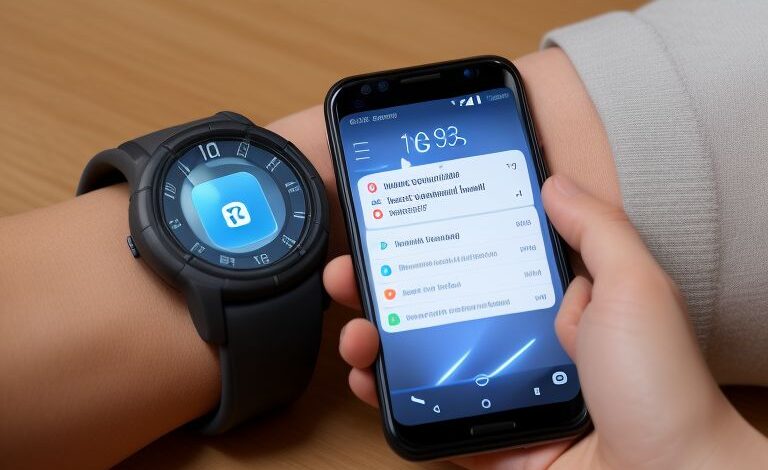Why Is My Phone in SOS Mode? Understanding the Mystery Behind It

Table of Contents
“Why is my phone in SOS mode?” If this has happened to you, you’re not alone. SOS mode on your phone is a feature that helps you make emergency calls when your phone can’t connect to a regular network. This means your phone can only call emergency services, like 911. It happens when there is no available cellular signal, which might be due to a network issue, a bad location, or even a problem with your phone itself. If you’re seeing this, it’s important to know that SOS mode is there to ensure you can reach help in an emergency, even if you don’t have a regular phone signal. But, it’s also something you’ll want to understand and fix if it stays on for too long.
There are several reasons why your phone may be stuck in SOS mode. It could be because of a service outage, where your phone is unable to connect to the network. This can happen if you’re in an area with poor reception or if there’s a problem with your phone’s settings. Sometimes, SOS mode will appear if your phone can’t find a connection, even if you’re in a place that normally has good service. You might also experience this if your phone is having trouble connecting to your carrier’s network or if there’s an issue with the SIM card. In most cases, turning off and restarting your phone or checking your settings can solve the issue. But if the problem persists, it might be a sign that you need to contact your carrier or Apple support for help.
What Does SOS Mode Mean on My Phone? Find Out Why It Happens
SOS mode on your phone is a special feature that lets you make emergency calls even when you have no regular service. When your phone enters SOS mode, it means there is no available cellular signal, so your phone cannot make regular calls or use mobile data. The only service it can access is the emergency number, like 911, allowing you to reach help in critical situations. This happens when your phone can’t connect to your carrier’s network, often due to weak or no signal in your area. Sometimes, the problem can be due to temporary network outages or being in a location with poor reception. It’s important to know that while your phone is in SOS mode, you can still use it to connect to Wi-Fi, which means you can browse the internet or send messages over the internet through apps like WhatsApp or iMessage, as long as your phone has a Wi-Fi connection. The SOS icon will show up at the top of the screen when your phone is in this state. If this issue persists, it’s best to check your phone’s settings or contact your network provider to help solve the problem.
Why Is My Phone in SOS Mode? Common Reasons for This Issue
SOS mode occurs when your phone can’t find a reliable cellular signal. This often happens when you’re in an area where your carrier’s network coverage is weak or unavailable. Locations like remote areas, underground spaces, or even tall buildings can block your phone’s signal, causing it to switch to SOS mode. Another common reason could be a network outage. If your carrier is facing technical problems, your phone may go into SOS mode because it can no longer connect to the network. A problem with your SIM card could also cause this mode. If your SIM card is not properly seated or is damaged, your phone might lose its connection to the network, triggering SOS mode. Additionally, outdated carrier settings or software glitches on your phone can also be to blame. Sometimes, if you accidentally turn off the mobile data or disable roaming, your phone might struggle to connect to the network and enter SOS mode. If your phone is stuck in this mode for an extended period, checking these potential issues or restarting your phone might help resolve the problem.
How to Fix SOS Mode on Your Phone: Simple Steps to Try
If your phone is stuck in SOS mode, there are a few steps you can take to fix it. First, check your network signal. If you are in an area with weak or no reception, moving to a different spot with better coverage might resolve the issue. If that doesn’t work, try restarting your phone. This can refresh the phone’s connection to the network and clear any temporary glitches. Another solution is to check if there are any software or carrier settings updates available. Go to your phone’s settings and look for any updates under the “About” section or “General” settings. Updating your phone can help fix any bugs that may cause SOS mode. Additionally, check your SIM card. If it’s loose or damaged, remove it carefully and reinsert it or replace it if necessary. If these steps don’t work, you may need to contact your carrier to see if there is a network outage or if there’s an issue with your account or plan that’s preventing your phone from connecting to the network.
Why Is My Phone in SOS Mode and How Can I Get Out of It?
If your phone is stuck in SOS mode, it means that it cannot connect to your regular network, but there are a few ways to get out of it. First, try moving to an area where there is better network coverage. This could be a spot where your carrier’s signal is stronger. If your phone is in a place with weak service, it might be unable to reconnect to the network and remain in SOS mode. Another way to get out of SOS mode is to restart your phone. This simple action often fixes connection issues, as it resets your phone’s connection to the network. If that doesn’t help, you can check for updates. Sometimes, outdated software or carrier settings can cause the issue. Update your phone by going to the “Settings” app, then look for updates in the “General” section. If your phone still stays in SOS mode, try removing and reinserting your SIM card. If nothing works, contacting your carrier or customer support may be the next best step to identify if there’s a service outage or an account issue preventing connection.
The Most Common Causes of SOS Mode: What You Need to Know

SOS mode can happen for a number of reasons. The most common cause is poor or no cellular service. If you’re in an area without a strong signal, such as remote locations, underground spaces, or rural areas, your phone will switch to SOS mode, which allows only emergency calls. Another reason for SOS mode is a network outage. Sometimes, network disruptions or maintenance can prevent your phone from connecting to the carrier’s service, leading to SOS mode. Issues with your phone’s SIM card can also cause this. If the SIM card is damaged or improperly inserted, it may disrupt your phone’s ability to connect to the network. Additionally, problems with your phone’s settings or software can lead to SOS mode. For example, if mobile data is turned off, or roaming settings are not enabled, your phone may have difficulty connecting. Understanding these causes is important because you can try basic fixes like moving to a better location, updating your settings, or restarting your phone to resolve the issue.
Why Does My Phone Keep Going into SOS Mode? Possible Reasons Explained
If your phone keeps switching to SOS mode, it may indicate an ongoing issue with your connection or phone settings. One of the most common reasons is being in an area with poor network coverage. If you frequently find yourself in remote areas or places with weak reception, your phone may struggle to stay connected, causing it to repeatedly enter SOS mode. Another possible cause is network outages or maintenance. If your carrier is experiencing problems, your phone may not be able to connect to the network and will switch to SOS mode. A malfunctioning SIM card can also cause this problem. If the SIM card is damaged or not properly inserted, your phone may lose its connection to the network and go into SOS mode. Software or settings issues can also be to blame. Make sure your phone’s software is up to date, and check that mobile data or roaming is enabled. If your phone continues to go into SOS mode, you may need to contact your carrier to check if there’s a deeper issue with your network or account.
SOS Mode on iPhones and Android Phones: How to Solve the Issue
Both iPhones and Android phones can enter SOS mode when they lose connection to a cellular network. However, the way to solve this problem may vary slightly depending on your device. For iPhones, the first thing to try is to move to an area with better reception. If that doesn’t work, restarting your phone can often fix connection problems. If your phone still stays in SOS mode, check if there are any available updates for your iPhone’s software or carrier settings. On Android phones, similar steps can be followed. Try moving to a different location, and restart your phone if necessary. You can also check for software updates in the settings. If your Android phone is still stuck in SOS mode, check your SIM card to ensure it’s properly inserted and not damaged. If the issue persists on either device, contacting your carrier for assistance or troubleshooting is the best option.
Can I Use My Phone in SOS Mode? Understanding What You Can Do
When your phone is in SOS mode, you may wonder if it’s still usable for other tasks. The good news is that while you won’t be able to make regular calls or use mobile data, you can still use your phone for certain functions. If your phone has a Wi-Fi connection, you can still browse the internet, send messages through Wi-Fi calling, or use apps that don’t require cellular service. For iPhones, if you have a Wi-Fi connection, you can even send iMessages and make calls using apps like WhatsApp or FaceTime. However, if you’re not connected to Wi-Fi, your phone will be limited to emergency calls only. You can also check if there are any updates to fix the issue, and once the network connection is restored, your phone should go back to regular service.
How to Avoid SOS Mode on Your Phone: Tips for Better Connectivity
To avoid SOS mode, the best solution is to ensure you are always in an area with good network coverage. Before going to places where there may be weak reception, like rural areas or underground locations, check your phone’s signal strength. If you often experience SOS mode in certain areas, consider contacting your carrier to see if they offer better coverage options or signal boosters. Keeping your phone updated is another important tip to avoid SOS mode. Software updates can fix bugs that cause connectivity issues, and carrier settings updates can improve network compatibility. Additionally, ensure that your SIM card is in good condition and properly inserted. If you travel often, enable roaming so that your phone can connect to networks in other areas. By taking these steps, you can reduce the chances of experiencing SOS mode on your phone.
Why Is My Phone in SOS Mode? How to Troubleshoot the Problem

If your phone is stuck in SOS mode and you’re unsure why, troubleshooting can help you figure it out. First, check the location you’re in. If you’re in an area with poor reception, move to a place with better signal coverage. If that doesn’t work, restart your phone to reset its connection to the network. Another important step is checking for software or carrier settings updates. Keeping your phone updated can help prevent issues that cause SOS mode. If you’re still stuck in SOS mode, check your SIM card. Make sure it’s inserted properly and not damaged. Lastly, if nothing works, contacting your carrier is the best way to determine if there is a service outage or if the problem lies with your account. With these troubleshooting steps, you can often resolve SOS mode quickly and restore your phone’s connection.
Conclusion
In conclusion, SOS mode can be a little confusing, but it’s a helpful feature in emergencies. It happens when your phone can’t connect to a regular network, but you can still make emergency calls. Most of the time, it’s due to weak reception, network problems, or issues with your phone’s settings. By following the troubleshooting steps like restarting your phone or checking your SIM card, you can often solve the problem quickly.
If SOS mode keeps showing up, it might mean there’s something wrong with your network or phone settings. It’s always a good idea to keep your phone updated and make sure it’s in a place with good coverage. If the problem doesn’t go away, don’t hesitate to contact your carrier for help. Understanding why this happens and how to fix it can help you stay connected when you need it most.
FAQs
Q: Why is my phone in SOS mode?
A: Your phone goes into SOS mode when it can’t connect to a regular network. This can happen because of weak reception or a network issue.
Q: How can I fix SOS mode on my phone?
A: Try restarting your phone, checking your SIM card, or moving to an area with better reception. You can also check for updates in the settings.
Q: Can I make regular calls while in SOS mode?
A: No, in SOS mode, you can only make emergency calls. Regular calls and internet use won’t work unless you have a Wi-Fi connection.
Q: Does SOS mode happen to all phones?
A: Yes, both iPhones and Android phones can go into SOS mode if they can’t find a network. The solution is usually the same for both types of phones.
Q: How do I prevent my phone from going into SOS mode?
A: Stay in areas with good signal, keep your phone updated, and check your SIM card for damage. These steps can help prevent SOS mode.




